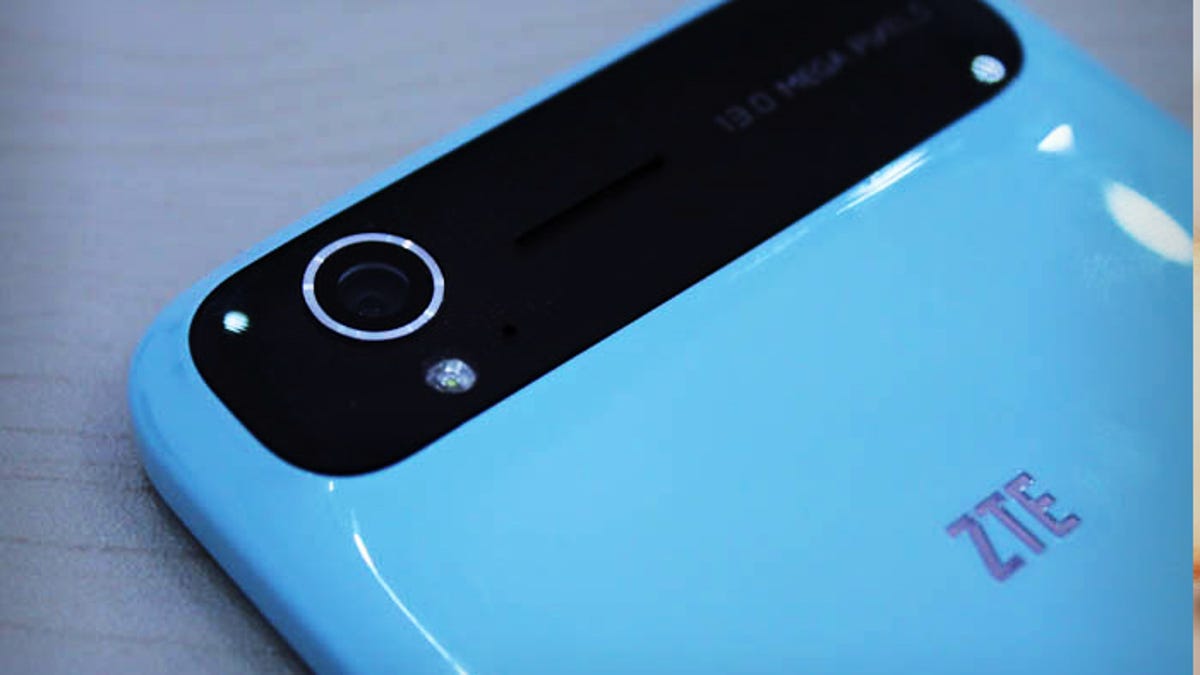ZTE gets more love from the carriers
The Chinese phone maker confirms that its Grand S will come to the U.S., but will consumers know or care about the company?

LAS VEGAS -- When the head of ZTE's North American business, Lixin Cheng, approached the U.S. carriers about building smartphones more than two years ago, he was met with skepticism.
During Cheng's meetings here at this year's Consumer Electronics Show, the carrier executives have told him: "Show me more."
It's indicative of the tremendous strides that ZTE has made in its relationships with the carriers, even as its brand continues to fly under the radar for consumers. After toiling in relative anonymity for the last two years building low-end and mass-market smartphones, the company seems poised to have a bigger impact in 2013.
Take the debut of the ZTE
He declined to specify when or with which carrier partner.
Looking ahead, Cheng said that U.S. carrier executives have been impressed with the 2014 concept models ZTE has shown off.
"There was a wow factor when they saw them," he said, adding that the executives pushed to make sure ZTE weren't holding anything back for one of their rivals.
ZTE has largely made smartphones that carried the wireless providers' brand, or were made to fit a specific low price. Early in the process, the carriers dictated a lot of the specifications and details that went into a product. But more recently, ZTE has had a lot more input into the development process.
"Before, they dominated the discussion," Cheng said. "They trust us more now."
While ZTE phones are abundant at the top-tier carrier stores, Cheng said many of the carriers use ZTE phones as their benchmark device for testing.
The carriers like ZTE because of the shorter development process for its phones. Cheng said it takes six to eight months from the design of a phone to launch, compared with the typical development time of 12 to 18 months.
Also to the carriers' liking, ZTE can produce the smartphones at a lower cost, meaning lower subsidies. At a time when the carriers are looking to get away from paying the pricey subsidy of the iPhone, ZTE presents an increasingly attractive option.
"We continue to position ourselves as the best [original equipment manufacture] partner," he said, adding he was more optimistic about this year's relationship with the carriers.
While its stock with the carriers may be rising, ZTE has zero pull with U.S. consumers. That's largely a result of its work building carrier-branded phones. The smartphones that do get the ZTE brand on them are offered at the smaller regional prepaid carriers.
The only real publicity ZTE has gotten recently was when the House Intelligence Committee said ZTE and Huawei poised a national security risk, a charge both companies have denied. The committee's report did specify that its concerns came from the infrastructure business, and not the mobile devices business.
ZTE has said, and Cheng confirmed again, that the company would not spend a lot of money attempting to build a brand in the U.S. The company instead would rely on carrier support, although he noted that it would employ viral marketing and social media tactics.
That was a large reason why ZTE held its press conference at CES; it wanted to get as a large a U.S. audience as possible for the debut of the Grand S.
Cheng expressed confidence that more people will get to know the ZTE name, and expects more phones launching in the U.S. to carry its logo.
"We're pretty new to the U.S. market, but we're growing very fast," he said.

